
NEW YORK — The pub, a shortened term for “public house,” ranks among Great Britain’s finest cultural contributions, providing a convivial setting for socialization that is hard to equal. Far more than a place to order a pint and a meal, pubs are as much a part of the landscape as red double-decker buses are in London.
Pub names can be straightforward or whimsical, ranging from Ye Old Cheshire Cheese or the Lamb & Flag to The Queen Vic or The George Inn. The Red Lion is the most common name for pubs and by some records, there are more than 500 Red Lion pubs in the United Kingdom. The names often reflect the pub’s history, ownership or location or they might pay homage to British royalty or an event in history. And sometimes they are just totally playful.
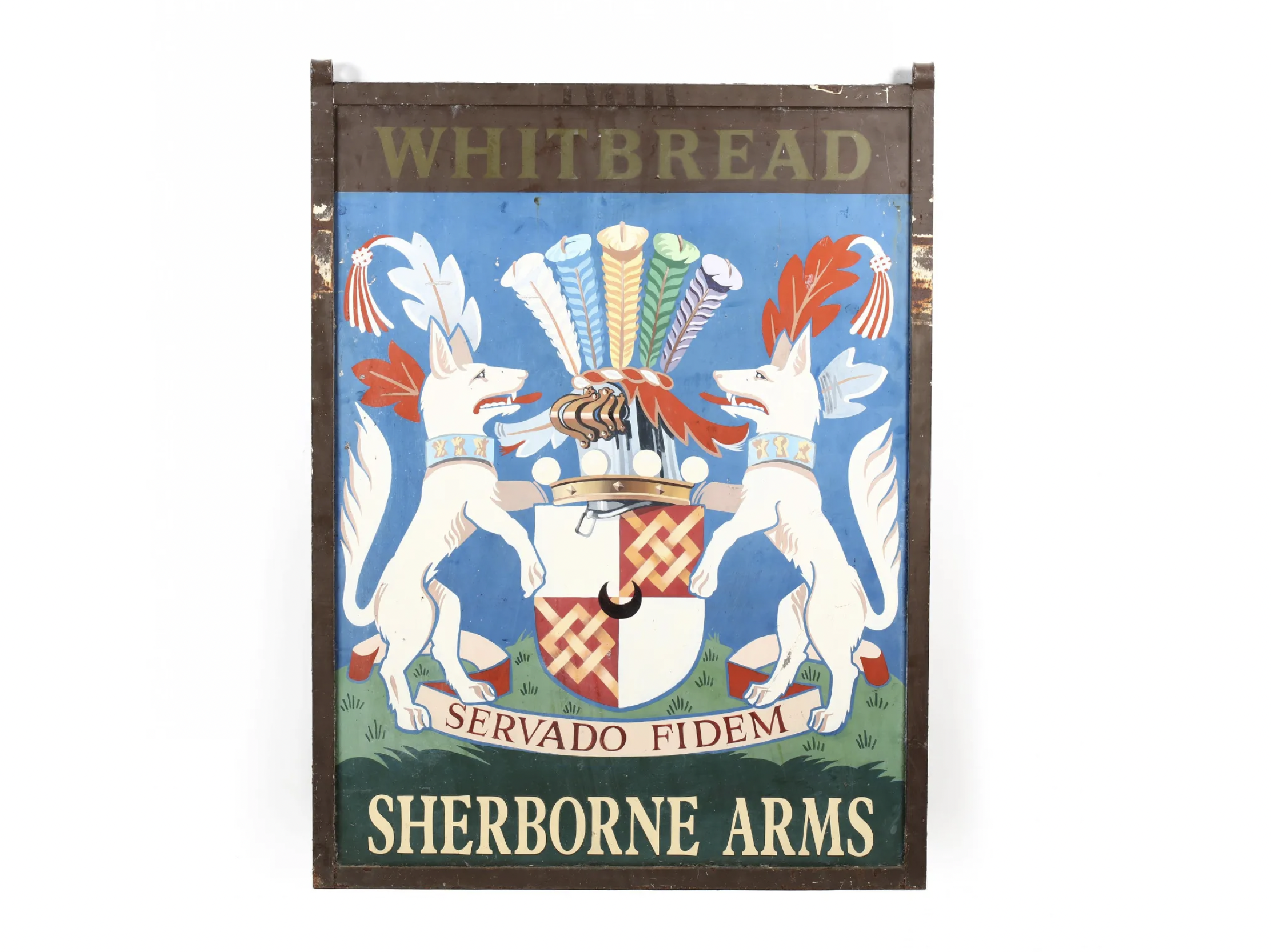
Pubs in Britain date back about 2,000 years to the Roman-era tavern, which was later supplanted by the alehouse. Many were launched when literacy was not widespread, so it made sense for pub owners to hang pictorial signs outside their establishments to let people know where they could enjoy a pint of ale. Eventually, it became customary to include the pub’s name in the design, which evolved into a double-sided swinging sign, often hung on brackets above a pub’s entrance. They continue to charm.
Author and British pub expert John Warland details many iconic pubs in Liquid History: an illustrated guide to London’s greatest pubs, and noted there is a great variety in decoration among the exterior signs for pubs. “Heraldic, religious crusades and royal associations are the most common,” he said, citing the White Hart, The Red Lion, The Rose & Crown and the Royal Oak.
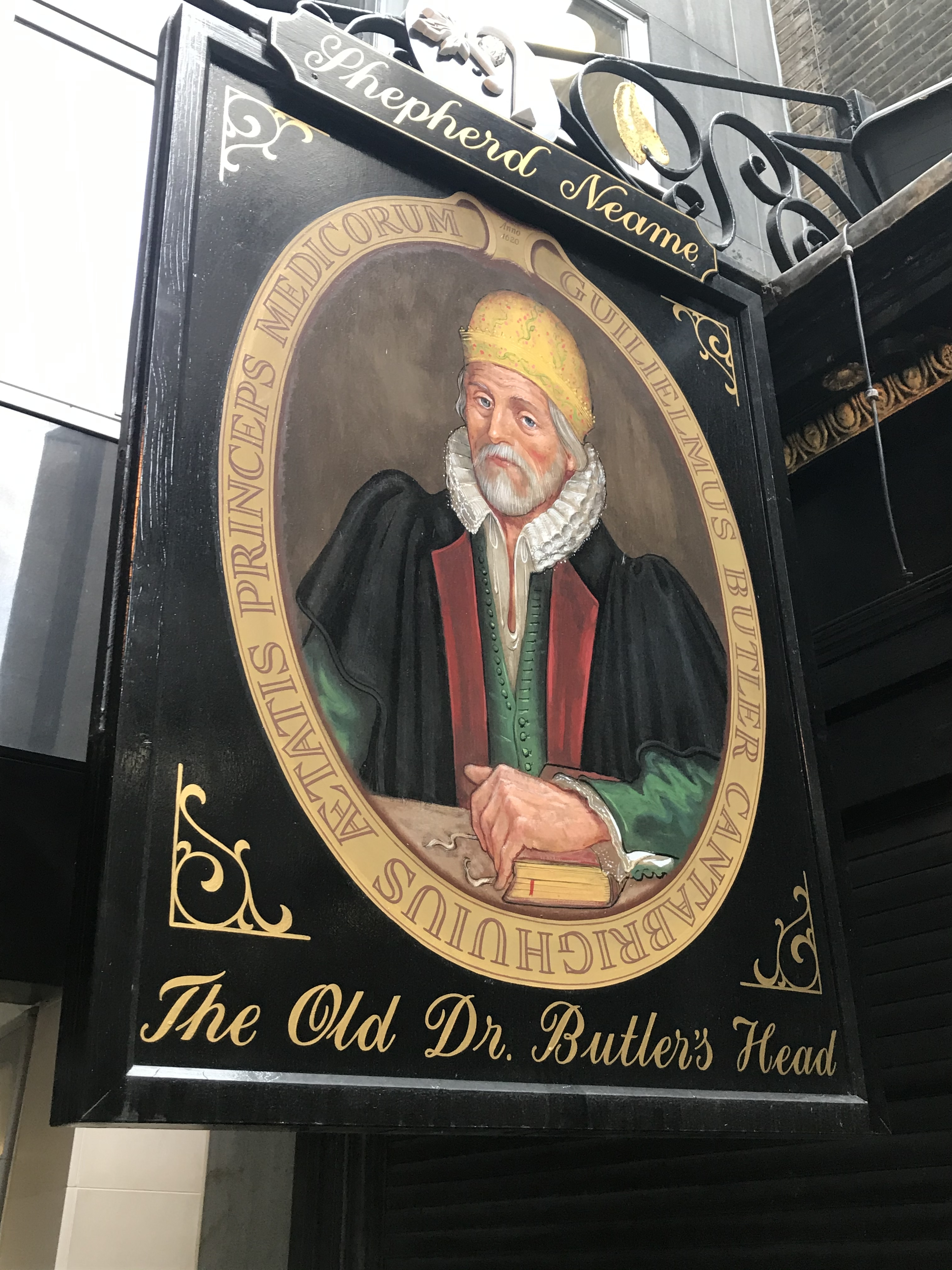
Among Warland’s top picks for notable and historic pub signs is the sign for one of London’s most historic pubs, The Old Doctor Butler’s Head in Moorgate, which was named for William Butler, the court physician to King James I and dates back to 1610. The sign features an elegant portrait of the doctor, surrounded by the Latin words “Guilielmus Butler Cantabrighuius Aetatis Princers Medicorum” (which translates to the far more modest-sounding “William Butler of Cambridge”). The pub was originally established in 1610 and the present building was constructed just after London’s Great Fire in 1666.
Warland also cites the beautifully illustrated handpainted sign for The Royal Oak pub in Borough London, very near to Chaucer’s Tabard Inn. The pub specializes in local ale-drinking traditions of the kind Chaucer wrote about in the Canterbury Tales. As with many historic pubs, it is named for a historical event. The young future king, Charles II, is said to have hid from soldiers in 1651 in a tree in Boscobel after a political upheaval and the tree was then dubbed the Royal Oak.
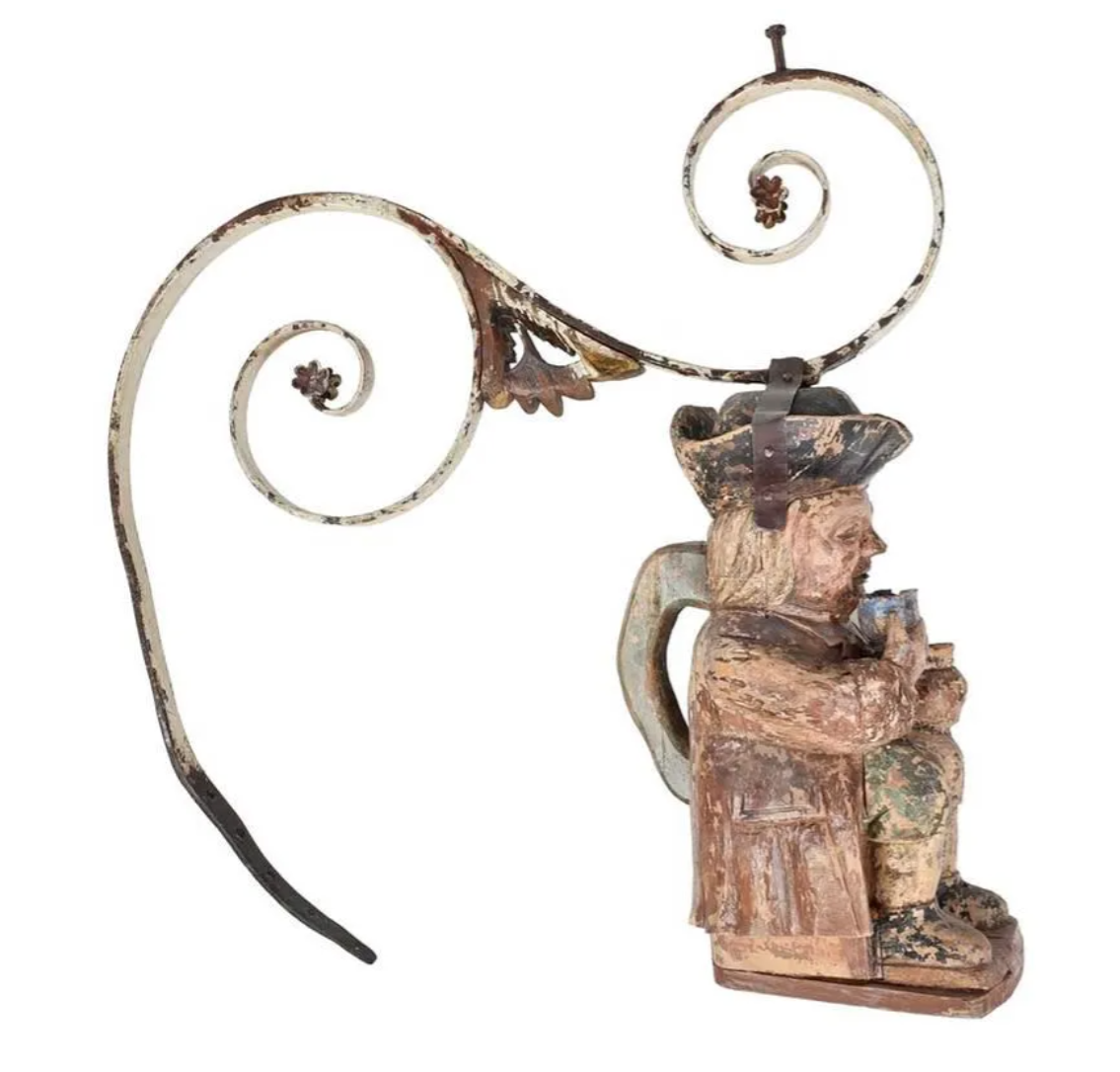
As noted above, many early pub signs were strictly figural. A perfect example of this is a 20th-century carved, painted and wrought iron pub sign, which does not even carry the name of the pub. The sign was in the form of a Toby jug and realized $750 plus the buyer’s premium in March 2020 at Brunk Auctions.
Pub signs can take the form of a simple rectangle, but the standouts go the extra mile. For example, a sign in the form of a bishop’s tall, shield-like hat, known as a mitre, adorns a lamp post touting the pub dubbed Ye Old Mitre. The design and decoration of pub signs can reflect the wry humor for which the British are famed. At one time, the Three Kings pub in Clerkwell had three “kings” frolicing on its sign: Henry VIII (the only one of the three who appears in British history books), King Kong and Elvis Presley.
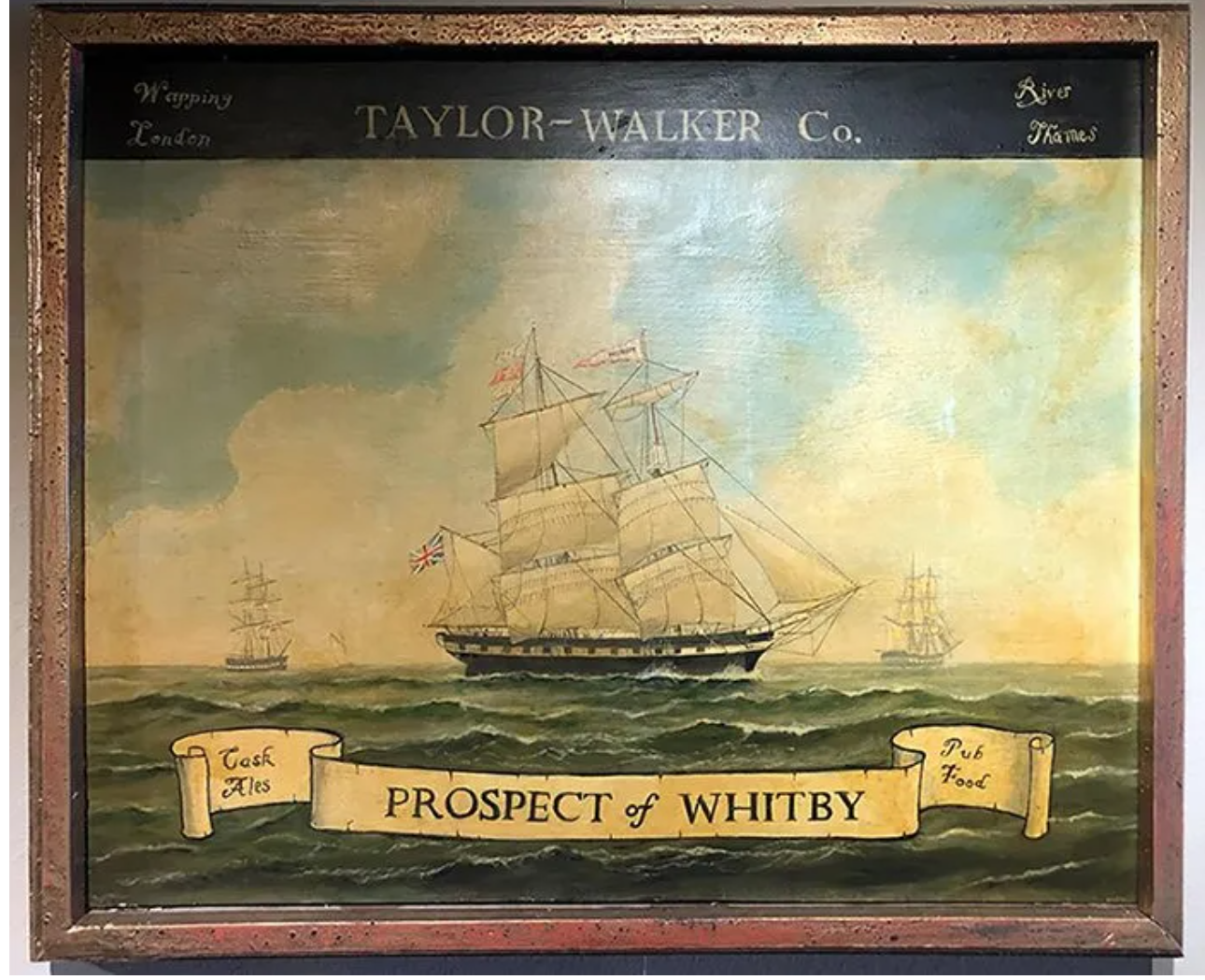
Before the era of trains and planes, a great deal of cargo moved on waterways, and in London, countless riverside pubs popped up along the banks of the Thames. From the oldest riverside tavern, The Prospect of Whitby, came a large antique sign that sold for $1,600 plus the buyer’s premium in July 2018 at Worthington Galleries. The original tavern is long gone, but after a fire in the early 19th century, it was rebuilt and took its current name from a coal-bearing ship that once docked next door.
Many pub signs boast portraits of key figures in history, such as the one for the Lord Nelson pub, featuring a portrait of Lord Nelson himself. Early pub signs often were marked to show their official regulation, and this one is inscribed with a phrase indicating the pub is “licensed to sell Beer, Wines & Spirits.” The Lord Nelson sign made $850 plus the buyer’s premium in September 2018 at Andrew Jones Auctions and is believed to come from the Lord Nelson Pub in Burnham Thorpe, where Nelson hailed from.
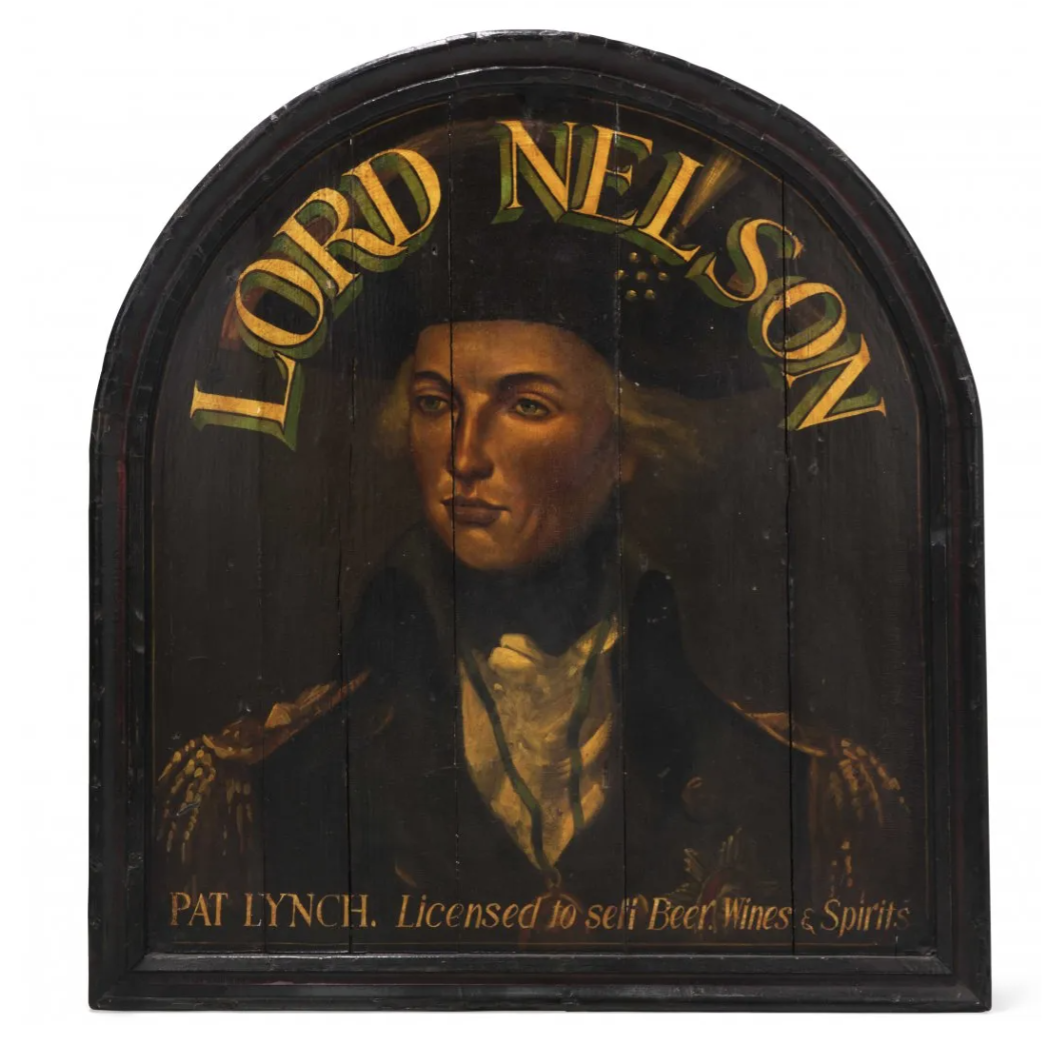
Sometimes pub signs have backstories that are as interesting as their decorations. A 20th-century double-sided sign for the Dog and Bacon pub brought $1,300 plus the buyer’s premium in November 2020 at Austin Auction Gallery. According to online searches, the Dog and Bacon sign likely came from a historic pub in Horsham, which reportedly got its name for a large bonfire described as “a dorking beacon” that would be held in the main area of Horsham. The sign is painted with the likeness of a Labrador named Jodie pictured with a hunk of bacon on a table.
Pub sign imagery has shifted during the centuries from straightforward historic scenes that honor Roman centurions and rulers such as Richard the Lionhearted or the Duke of Wellington to more modern motifs such as King Kong and Elvis. No matter when they were made, a contingent of collectors will always express interest in a genuine pub sign. Deliberately big and bold to gain attention, the personalities of pub signs are often as big as the signs themselves.


